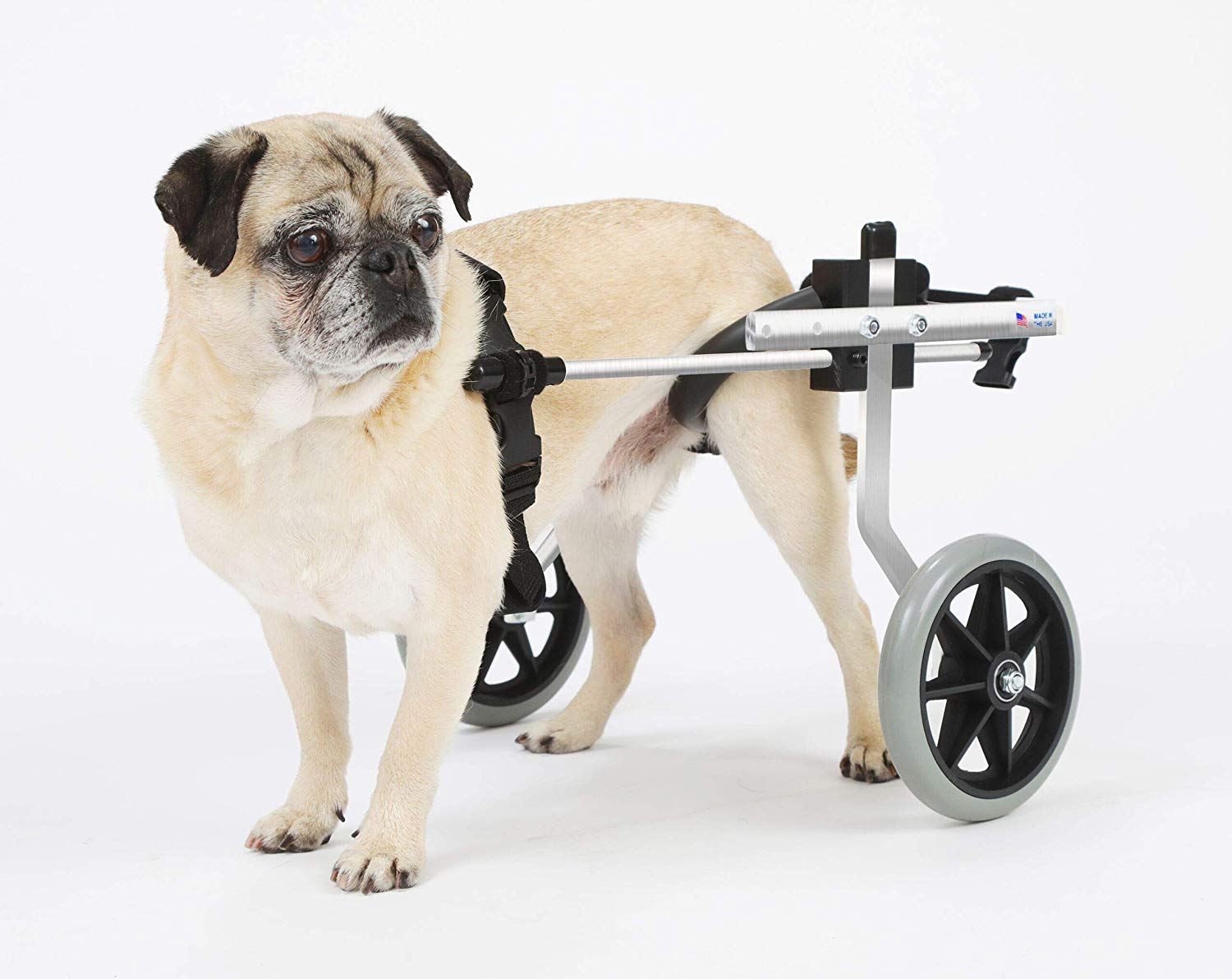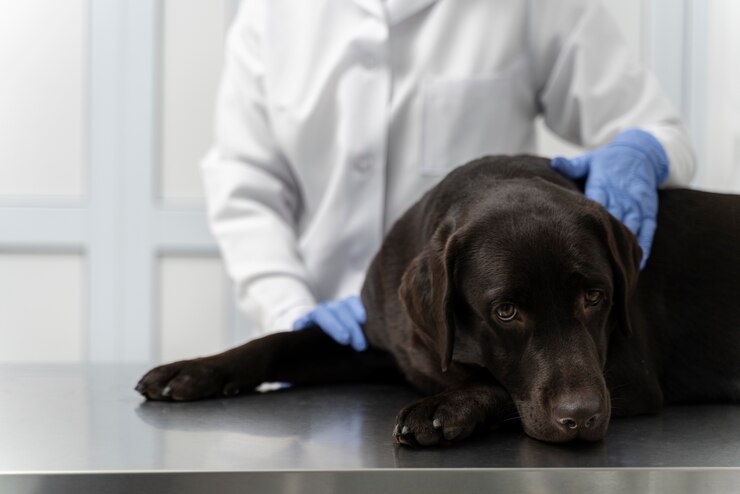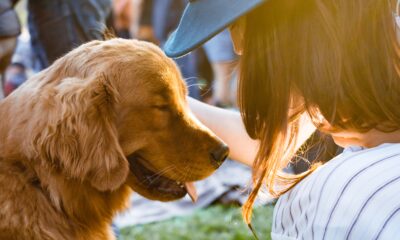Dog
How Much Do puppy Vaccinations Usually Cost?

Vaccines are very important to prevent diseases that can be serious for your dog . By vaccinating your partner, you also help prevent the spread of such diseases .
Some municipalities launch low-cost or even free vaccination campaigns to help those who cannot afford vaccinations for their dogs , so it is a good idea to check with your administrative bodies to see if they have this option.
As for humans, there are vaccines that are mandatory and others that are recommended . It is interesting to know the vaccination schedule and the price of each of the vaccines.
It is important that you take into account the expense of vaccinating your dog because it is one of the many expenses ( such as the dog chip or civil liability insurance if you have a potentially dangerous PPP breed dog ) that we analyze in our article on the Main expenses of having a dog .
How Much Do Dog Vaccinations Usually Cost?
DOG CARE
Vaccines are very important to prevent diseases that can be serious for your dog . By vaccinating your partner, you also help prevent the spread of such diseases .
Some municipalities launch low-cost or even free vaccination campaigns to help those who cannot afford vaccinations for their dogs , so it is a good idea to check with your administrative bodies to see if they have this option.
As for humans, there are vaccines that are mandatory and others that are recommended . It is interesting to know the vaccination schedule and the price of each of the vaccines.
It is important that you take into account the expense of vaccinating your dog because it is one of the many expenses ( such as the dog chip or civil liability insurance if you have a potentially dangerous PPP breed dog ) that we analyze in our article on the Main expenses of having a dog .
Table of Contents
What are infectious diseases
How does your dog defend itself from diseases?
What diseases can I prevent by vaccinating my dog?
Mandatory vaccinations and recommended vaccinations
Vaccination schedule for your dog
How much does it cost to vaccinate my dog?
What are infectious diseases
Infectious diseases are those caused by different pathogenic microorganisms (viruses, bacteria, protozoa, fungi) that invade the body of the host organism and cause disease. In addition, they are transmitted from one animal to another through urine, feces, and other bodily secretions. They can also be contracted by breathing in spores from the soil, through wounds, or through sexual transmission.
How does your dog defend itself from diseases?
There are diseases that are specific to certain animals. For example, a dog cannot contract a specific disease from a horse. It is said that the animal that cannot contract it has a natural immunity to said disease. Other diseases, however, are not specific and can infect different types of animals.
To defend against disease, your dog’s immune system, just like ours, generates antibodies, which attack and destroy the germ. Therefore, when an infectious agent makes your dog sick,his immune system will create antibodies against that germ . From this moment on, your dog will be protected against said germ. This is called active immunity and is usually maintained throughout the dog’s life.
Active immunity can be induced by vaccination . By vaccinating your dog, what you do is expose him to dead germs, live attenuated germs , incapable of causing disease, or toxins and germ products. This process stimulates the production of specific antibodies for the specific germ of the vaccine. However, unlike natural exposure, the duration of protection is limited, so revaccinations will be necessary to maintain the necessary levels of protection.
There is a third type of immunity called passive immunity , which is passed from one animal to another. It is the one that the puppies acquire when they take their mother’s colostrum, full of antibodies. This immunity persists as long as the antibodies remain in the puppy’s circulatory system.
What diseases can I prevent by vaccinating my dog?
Now that we know how both our dog’s immune system and vaccines work, we are clear that they are important to prevent the spread of diseases that can be serious for him. The most important are the following:
Parvo virus .
It is a disease caused by a highly contagious virus that can be fatal for your dog, especially if it is a puppy. This disease is transmitted through feces or by being in a contaminated area. Commercial vaccines protect against all currently known strains. The first vaccination is given to puppies at 5 weeks of age. They will then receive new doses at 8 weeks, 10-12 weeks, and 16 weeks. For adult dogs, annual memories are made, although protection is currently being seen to last longer than previously thought and memories are beginning to be made every two or three years. You can consult our parvovirus article if you want to know more about this disease .
Distemper
This disease can also be deadly. The first vaccination is done after weaning the puppy and before taking it to its new home and being exposed to other dogs. Thus, at 5 weeks, the puppy will receive a vaccine called Puppy DP, for parvovirus and distemper.
Infectious hepatitis .
It is a modified virus vaccine that protects against canine hepatitis and two of the adenoviruses implicated in kennel cough.
Leptospirosis .
Disease that attacks the kidney and liver. It is administered in the pentavalent or heptavalent vaccine. The difference between the two vaccines is that the seven-valent contains two more strains of hepatitis and leptospirosis, which is why more and more veterinarians administer the latter.
Kennel cough.
It affects the respiratory system of the dog. Vaccination against this disease is based on the administration of strains that protect against parainfluenza and bordetella .
rage .
This dangerous disease can also affect humans. It is transmitted by the bite of an infected animal and causes inflammation in the brain. It is deadly for your dog . It is usually given at three months of age and then annually or every three years. In many countries it is a legally required vaccine. Learn all about rabies in our article on this dangerous disease .
Coronavirus .
Vaccination against the coronavirus does not prevent the disease, but reduces its severity. It is a mild disease, so it does not appear in routine vaccination schedules.
Lyme disease .
Also known as canine borreliosis , it is transmitted by ticks. There is currently a vaccine against it but it protects in the very short term, so its administration has not been established. It may be recommended for dogs that are at high risk.
Remember that you can expand the topic of our article dedicated to the main diseases of dogs .
Mandatory vaccinations and recommended vaccinations
Due to the seriousness of the diseases, vaccinations against distemper, infectious hepatitis, parvovirus, and rabies are mandatory .
In addition, it is advisable to vaccinate the dog against leptospirosis, canine parainfluenza, kennel cough (bordetella vaccine), coronavirus and Lyme disease in high-risk situations.
Vaccination schedule for your dog
In Spain, there is a standard vaccination schedule followed by most veterinarians, except for changes in special circumstances such as the health of the dog, its environment, its area of residence or its habits and exposure to certain infectious agents.
Said schedule is as follows:
At 6 weeks . Puppy Vaccine. Parvovirus and distemper. It is not always administered, it depends on the weaning of the puppy.
At 8 weeks. Pentavalent or Heptavalent vaccine: protects against parvovirus, kennel cough, distemper, infectious hepatitis and leptospirosis. The Heptavalente has two more strains against hepatitis and leptospirosis than the Pentavalente.
At 12-13 weeks . Second dose of the polyvalent vaccine.
At 5-6 months . Vaccine against distemper, parvovirus, hepatitis, leptospirosis and rabies.
Annually or every two years (depending on the Autonomous Community): Heptavalent and Rabies.
Except in Galicia, Euskadi and Catalonia, where it is voluntary, in the rest of Spain, the rabies vaccine is compulsory.
How much does it cost to vaccinate my dog?
There is a price recommended by the College of Veterinarians, which is the one that we present below . This price may vary from one clinic to another, so we recommend that you ask your veterinarian for the price established by him to get a more accurate idea of what it will cost you to have your dog protected. Generally, prices range between the following values:
Heptavalent or pentavalent vaccine (parvovirus, kennel cough, distemper, infectious hepatitis and leptospirosis). Between €40 and €50
Trivalent vaccine (parvovirus, distemper and hepatitis). Between €30 and €40
Vaccine against rabies . Between €20 and €30
Every year we must revaccinate against heptavalent and rabies.
conclusions
Immunity to diseases can be acquired through vaccination.
It is important that you vaccinate your dog against certain diseases that can be very serious or even fatal for him.
The seven-valent vaccine protects against parvovirus, kennel cough, distemper, infectious hepatitis, and leptospirosis.
The rabies vaccine is very important and compulsory in Spain (except Galicia, Euskadi and Catalonia) and in many countries.
There is a vaccine for puppies that have been weaned too early.
Dog
Wheelchairs for Dogs Enhancing Mobility and Quality of Life

For many pet owners, dogs are more than just animals they’re cherished companions who bring immense joy and companionship. Unfortunately, some dogs experience mobility challenges due to injuries, illnesses, or congenital conditions that affect their ability to walk or run. Fortunately, technological advancements and innovative solutions have paved the way for the creation of specialized wheelchairs designed specifically for dogs. These devices play a crucial role in improving the mobility and overall quality of life for these beloved pets.
Understanding the Need for Dog Wheelchairs
Dogs can encounter mobility issues due to various reasons, including spinal injuries, degenerative diseases, neurological disorders, and limb amputations. Such conditions can severely limit a dog’s movement and impact their independence. Wheelchairs for dogs provide essential support by assisting in weight-bearing, enabling them to move freely, exercise, and engage in regular activities without excessive strain or discomfort.
Design and Functionality of Dog Wheelchairs
Dog wheelchairs are custom-built devices tailored to fit the unique anatomy and size of different dog breed. These wheelchairs typically consist of a frame, wheels, straps or harnesses, and padding for comfort. The design varies based on the dog’s needs rear support for hind limb weakness, front support for forelimb disabilities, or full-body support for dogs with more complex conditions.
Most wheelchairs are adjustable, allowing for modifications as the dog’s condition progresses or changes. They’re lightweight and crafted from durable materials to ensure ease of movement and durability. Some models even come with accessories such as all-terrain wheels for outdoor adventures or additional support for stability.
Benefits of Using Wheelchairs for Dogs
The advantages of dog wheelchairs are manifold. Primarily, these devices restore mobility and independence, enabling dogs to move around freely, exercise, and participate in activities they previously enjoyed. Enhanced mobility helps prevent muscle atrophy, maintains joint flexibility, and contributes to better overall health.
Additionally, wheelchairs can improve a dog’s mental well-being by reducing frustration and anxiety associated with limited movement. It fosters a sense of normalcy and allows them to remain an active part of their family’s life. Moreover, dog wheelchairs can alleviate the burden on pet owners, making it easier to care for their disabled pets and reducing the risk of caretaker burnout.
Adoption and Adaptation to Dog Wheelchairs
Introducing a dog to a wheelchair requires patience and positive reinforcement. Initially, some dogs may be hesitant or uncomfortable with the device. Training and gradual introduction play a crucial role in helping them adapt. Encouraging them with treats, short sessions, and gentle guidance can help dogs become accustomed to the wheelchair.
It’s essential to monitor the dog’s comfort and make necessary adjustments to ensure the wheelchair fits properly without causing any discomfort or chafing. Regular checks and proper maintenance are vital to ensure the wheelchair remains functional and comfortable for the dog.
Impact on the Pet-Owner Relationship
The use of wheelchairs can deepen the bond between pets and their owners. Owners often witness their dog’s determination and resilience, strengthening their emotional connection. Furthermore, the satisfaction derived from witnessing their pet’s improved quality of life reinforces the sense of companionship and care.
Conclusion
Wheelchairs for dogs are invaluable tools that significantly improve the lives of disabled or mobility-impaired pets. These devices not only restore freedom of movement but also contribute to the overall well-being and happiness of the dog. The advancements in veterinary medicine and technology continue to drive innovation in creating more tailored and effective solutions, providing hope and support for dogs and their loving owners.
Through these wheelchairs, dogs can continue to enjoy a fulfilling life, filled with love, play, and companionship, reaffirming the timeless bond between humans and their furry companions.
Dog
Understanding Dog Constipation

Dogs are cherished friends that are renowned for their lively nature and unwavering devotion. But just like people, dogs can have health problems, and constipation is a typical ailment that they face. It’s critical for responsible pet owners to be aware of the warning symptoms, comprehend the underlying causes, and understand how to treat and avoid constipation in dogs.
What Is Constipation in Dogs?
Constipation in dogs is the inability to easily pass stool due to irregular or difficult bowel motions. Dogs typically urinate once or more times a day, according to their age, diet, and general health. Constipation in dogs results in firm, dry stools that are difficult to pass, which can be uncomfortable and possibly lead to health issues.
Dog constipation causes:
Dog constipation can be caused by a number of things, such as:
- Dietary Problems: Constipation may result from abrupt dietary changes or inadequate fiber consumption. Low-fiber diets might cause firmer, more difficult-to-pass stools.
- Dehydration: Drinking too little water can make the body absorb additional moisture from the feces, which makes it harder to pass and dry.
- Absence of Exercise: Getting regular exercise encourages bowel movements. Dogs that lead sedentary lives may be more prone to constipation.
- Obstructions: Eating non-digestible materials such as hair, bones, or foreign objects can clog the digestive track and cause constipation.
- Underlying Medical Conditions: Disorders such enlarged prostates, anal gland disorders, neurological diseases, or digestive system cancers can cause
Symptoms of Dog Constipation:
Identifying constipation symptoms in dogs is crucial for early intervention. Look out for the following signs:
- Straining: Continuous attempts to defecate with little or no results is a telltale sign of constipation.
- Dry, Hard Stool: Stools that are dry, hard, and smaller than usual indicate constipation.
- Abdominal Discomfort: Your dog may show signs of discomfort, such as restlessness, whining, or a hunched posture due to abdominal pain.
- Loss of Appetite: Constipated dogs might lose their appetite or show a decreased interest in food.
- Vomiting: In severe cases, constipation can lead to vomiting, as the gastrointestinal tract becomes impacted.
Treating Dog Constipation:
If you suspect your dog is constipated, it’s essential to consult a veterinarian for proper diagnosis and treatment. However, some measures can help alleviate constipation:
- Dietary Changes: Adding fiber-rich foods like pumpkin, sweet potatoes, or bran to your dog’s diet can soften stools and facilitate bowel movements.
- Hydration: Ensure your dog has access to fresh water at all times. Increased water intake helps soften stools and promotes bowel movements.
- Exercise: Regular exercise aids digestion and encourages bowel movements. Take your dog for walks or engage in active play sessions.
- Medication: Your vet may prescribe stool softeners or laxatives to help your dog pass stools more comfortably.
- Enemas or Manual Extraction: In severe cases, a veterinarian may need to perform an enema or manually extract the impacted stool under sedation.
Preventing Dog Constipation:
Prevention is key in managing constipation in dogs:
- Balanced Diet: Feed your dog a well-balanced diet with adequate fiber content to promote healthy digestion.
- Hydration: Ensure your dog drinks enough water to maintain proper hydration levels.
- Regular Exercise: Incorporate regular physical activity into your dog’s routine to support gastrointestinal health.
- Monitor Health: Regular veterinary check-ups can help detect and address any underlying health issues that may lead to constipation.
Conclusion
Dog constipation can be uncomfortable and concerning for both pets and owners. By understanding the causes, recognizing symptoms, and taking preventive measures, pet owners can help their dogs maintain healthy digestion and overall well-being. Consulting a veterinarian for proper diagnosis and guidance is essential in managing and preventing constipation in dogs.
Dog
Introduction to Hill’s Science Diet for Your Pets

Hill’s Science Diet is a trusted brand in pet nutrition, offering a range of premium pet food products that are designed to meet the unique nutritional needs of dogs and cats. With a focus on high-quality ingredients, balanced nutrition, and rigorous testing, Hill’s Science Diet products have become a staple in many pet owners’ homes. In this article, we’ll take a closer look at Hill’s Science Diet, its history, and the benefits it offers for your pet.
The History of Hill’s Science Diet
Hill’s Science Diet was founded by a veterinary surgeon named Dr. Mark L. Morris Sr. in the early 1930s. Dr. Morris was a pioneer in pet nutrition, and he was committed to improving the health and well-being of dogs and cats through better nutrition. Over the years, Hill’s Science Diet has continued to evolve and innovate, always staying at the forefront of pet nutrition research and development. Today, Hill’s Science Diet is a well-known and respected brand in the pet food industry, and it continues to be dedicated to providing high-quality, nutritious food for pets.
Why Choose Hill’s Science Diet for Your Pet
There are many reasons to choose Hill’s Science Diet for your pet. First and foremost, Hill’s Science Diet products are made with high-quality ingredients, carefully chosen to provide balanced nutrition for dogs and cats. This means that your pet will receive all the nutrients they need to maintain optimal health and well-being. Additionally, Hill’s Science Diet products undergo rigorous testing to ensure that they are safe and effective for pets.
Hill’s Science Diet for Different Life Stages
Hill’s Science Diet offers a range of products that are specifically designed for different life stages, from puppies and kittens to adult dogs and cats, and even senior pets. This means that you can choose a product that is tailored to your pet’s specific needs, ensuring that they receive the best possible nutrition at every stage of their life. Whether you have a growing puppy, a mature adult dog, or an aging cat, Hill’s Science Diet has a product that is right for your pet.
Hill’s Science Diet for Specific Health Conditions
In addition to life stage-specific products, Hill’s Science Diet also offers products that are designed to address specific health conditions. This includes products for pets with food sensitivities, digestive issues, weight management, and more. If your pet has a special health need, Hill’s Science Diet has a product that can help.
Hill’s Science Diet and Pet Care Community
Hill’s Science Diet is more than just a brand of pet food – it’s a community of pet owners, veterinarians, and pet care experts who are dedicated to improving the lives of pets. Hill’s Science Diet offers a range of resources, including educational articles, videos, and more, to help pet owners learn about pet nutrition and care. Additionally, Hill’s Science Diet is involved in numerous charitable initiatives, including supporting animal shelters, providing disaster relief to pet owners, and more.
Conclusion
Hill’s Science Diet is a premium brand of pet food that offers high-quality, nutritious products for dogs and cats. With a focus on balanced nutrition and rigorous testing, Hill’s Science Diet products are a great choice for pet owners who want to give their pets the best possible care. Whether you have a young puppy, an adult dog, or an aging cat, Hill’s Science Diet has a product that is right for your pet. So why not try Hill’s Science Diet for your pet today and see the difference for yourself?
-

 Exotic1 year ago
Exotic1 year agoChoosing Koi Fish From Petsmart
-

 Dog2 years ago
Dog2 years agoPomeranian Dog Best Bread Information
-

 Turtle2 years ago
Turtle2 years ago8 Best Filters For Turtle Tanks
-

 Turtle2 years ago
Turtle2 years agoPetSmart Crabs – The Right Way to Care For Your Pet Crabs
-

 Exotic10 months ago
Exotic10 months agoBuying a Bearded Dragon For Sale From PetSmart? Read This First
-

 Login10 months ago
Login10 months agoanimal shelters near me
-

 CAT1 year ago
CAT1 year agoBuying a Whisker City Water Fountain
-

 Dog2 years ago
Dog2 years agoLarge Münsterländer And Its Breed In 2022
